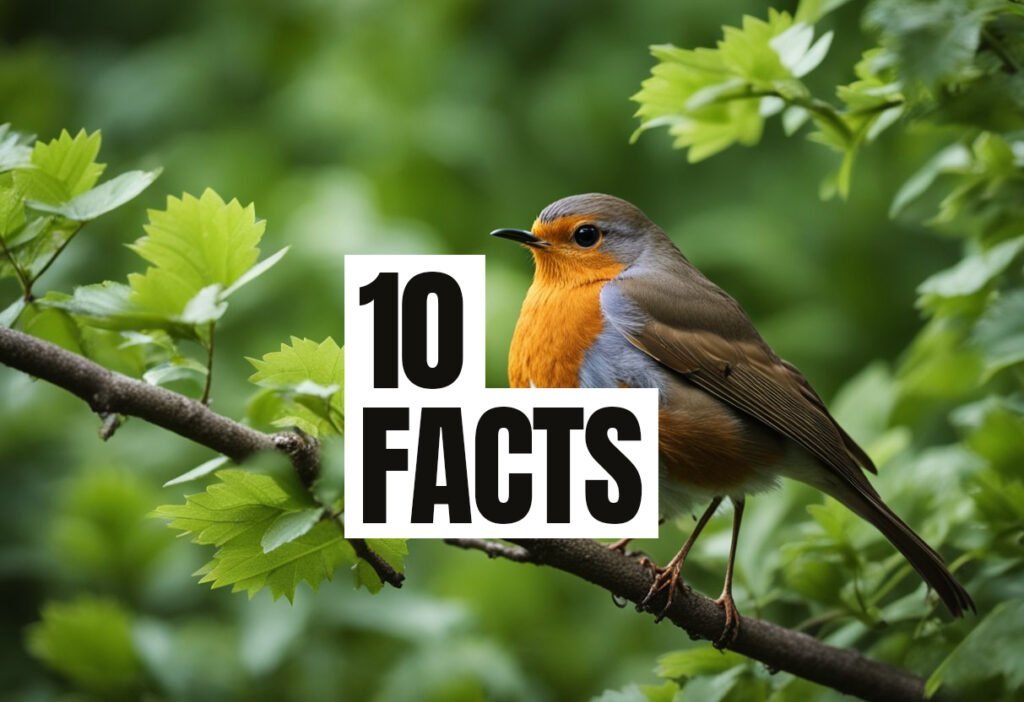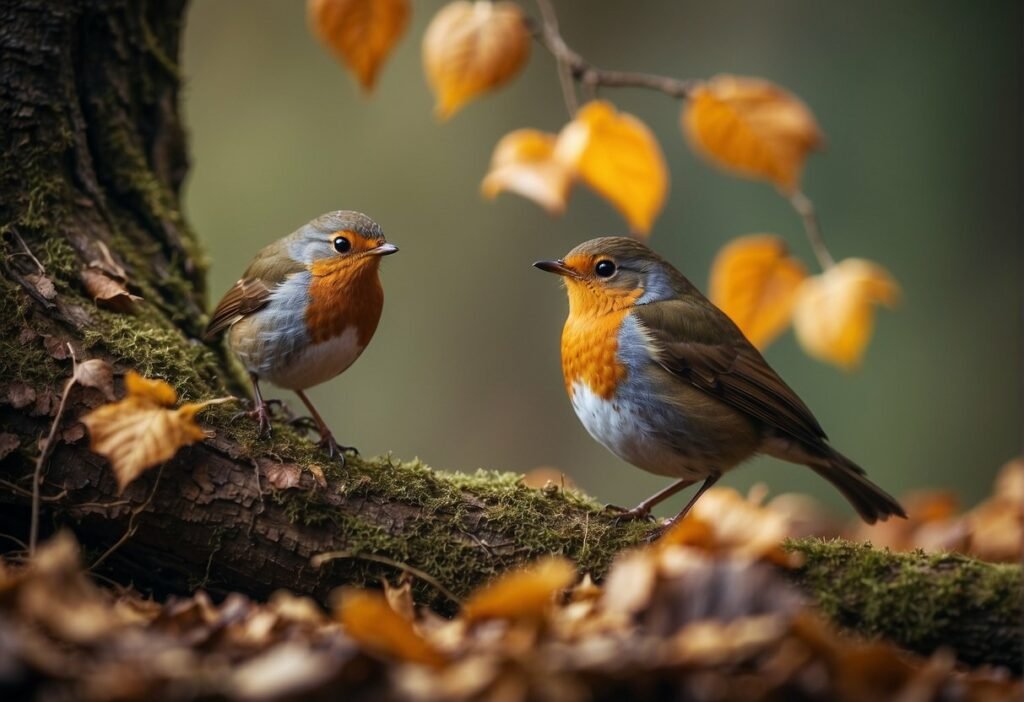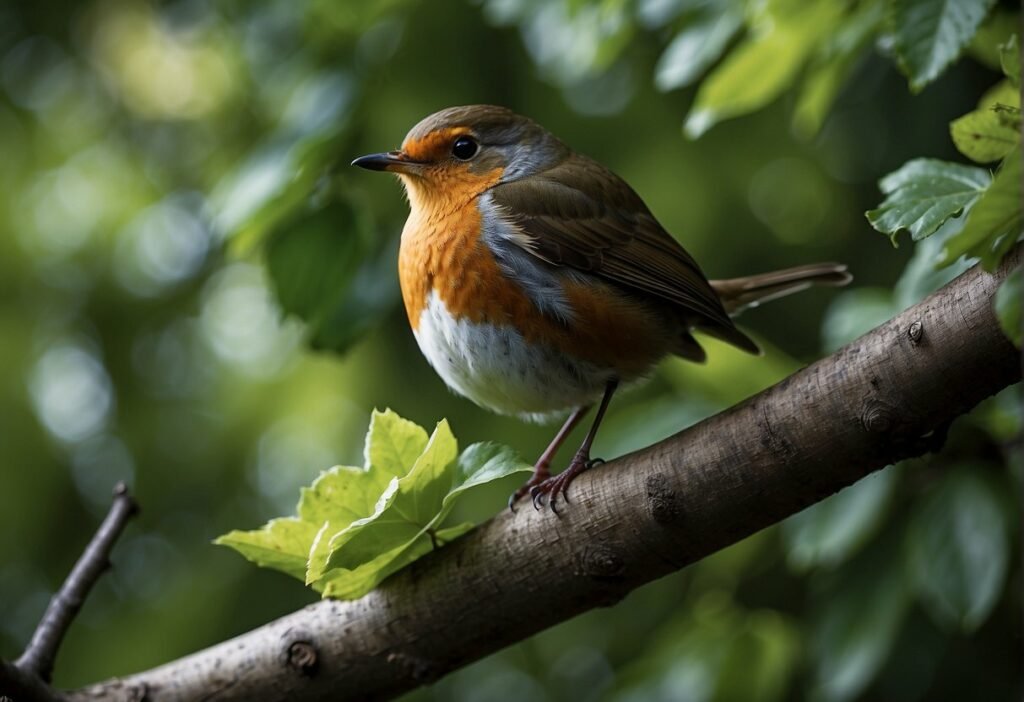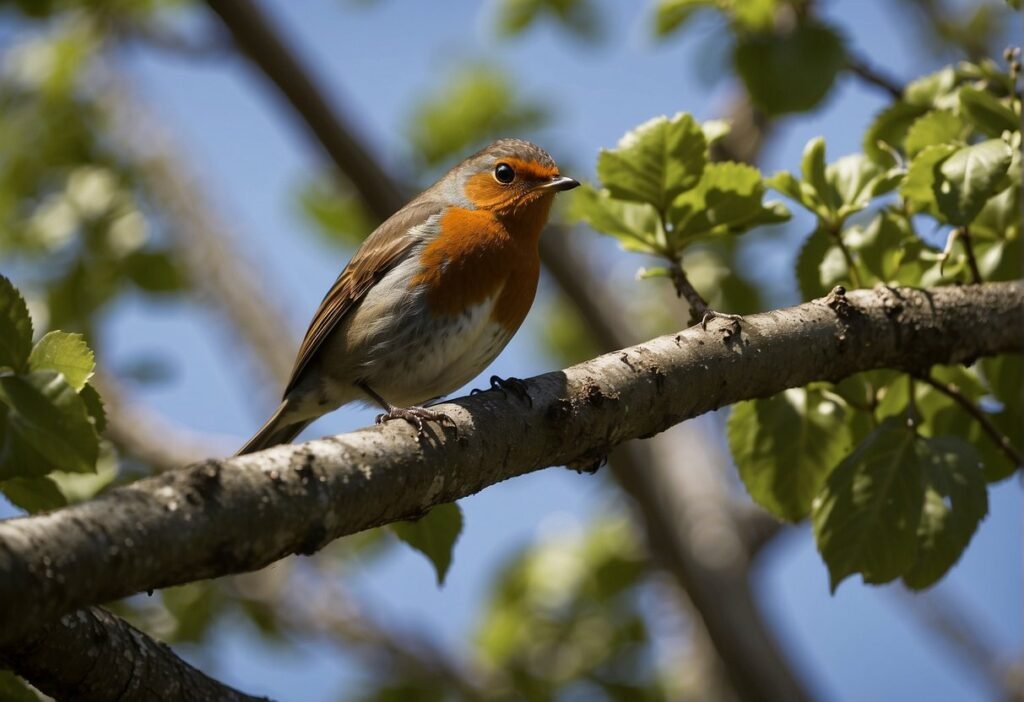Robins are a common sight in many backyards and parks throughout North America, and their distinctive orange-red breast makes them easy to spot. While many people may assume that robins build a new nest each year, the question remains: do robins return to the same nest?

The answer is not a simple yes or no. While robins are known to be loyal to their breeding territories, they may not necessarily use the same nest each year. In fact, robins may build multiple nests within their territory, and they may choose a different nest to use each year. This behavior is believed to be a way for robins to avoid predators, as using the same nest repeatedly could attract unwanted attention.
Despite the fact that robins may not always use the same nest, they are still known for their impressive nesting habits. Robins are skilled builders, using a variety of materials such as grass, twigs, and mud to create a sturdy nest. They also have a unique way of lining their nests with soft materials like grass and feathers to create a cozy environment for their eggs and chicks. With their impressive building skills and territorial loyalty, robins are a fascinating species to observe and study.
Robin Nesting Behavior and Habitat
Understanding Robin Nesting Patterns
Robins are known for their cup-shaped nests that they build in various habitats. They are commonly found in woodland areas, but they also thrive in urban environments, such as backyards and lawns. They can also be found in farmland and other open areas.
During the nesting season, which typically occurs during the breeding season in the spring, robins will search for a suitable nest site. They prefer to build their nests in deciduous trees, using nesting materials such as grass, mud, and leaves.
The Lifecycle of a Robin’s Nest
The construction of a robin’s nest begins with the foundation, which is made of twigs and other materials to create a sturdy base. The cup-shaped structure is then built on top of the foundation using nesting materials such as grass, mud, and leaves.
Robins may reuse nests from previous years or build new ones. If a nest is reused, it will be repaired and refurbished before the eggs are laid. If a new nest is built, it will typically take about a week to complete.
Once the nest is complete, the female robin will lay a clutch of eggs, which typically consists of 3-5 eggs. The eggs will be incubated for about two weeks before hatching.
After hatching, the young robins, or fledglings, will remain in the nest for about two weeks before they are able to fledge and leave the nest.
Robins may have multiple broods during the nesting season, with some robins having up to two broods. The timing of nesting and incubation periods can vary depending on the time of year and location.
Overall, robins exhibit consistent nesting behavior and habitat preferences, making them a familiar and beloved backyard bird.
Robins and Human Interactions
Robins are a common sight in many backyards and gardens across North America. Their bright red breast and cheerful song make them a favorite among birdwatchers and nature enthusiasts. But what can humans do to attract and protect these beloved birds?
Nest Placement and Safety
Robins typically build their nests in trees, shrubs, or other sheltered locations. However, they are also known to build their nests on ledges, in birdhouses, or even on buildings. It is important to ensure that the nest location is safe from potential predators such as cats, raccoons, and snakes.
One way to protect robins is to provide them with a safe nesting site. This can be done by installing a birdhouse specifically designed for robins or by creating a nesting platform. These structures should be placed in a sheltered location and away from potential predators.
Attracting and Protecting Robins
In addition to providing a safe nesting site, humans can also attract robins by providing them with food. Robins are omnivores and feed on a variety of foods including earthworms, fruit, and invertebrates. To attract robins to your yard, consider planting fruit-bearing trees or shrubs and providing a source of soil and leaf litter for them to forage in.
It is also important to protect robins from potential threats such as pesticides and habitat destruction. By creating a bird-friendly environment, humans can help ensure the survival of these beloved birds.
Overall, robins are a fascinating species that have adapted well to living in close proximity to humans. By providing them with a safe nesting site and a source of food, humans can help ensure their continued success.
Frequently Asked Questions
How often do robins reuse their nests?
Robins often reuse their nests from previous years, especially if the nest was successful in raising young. However, they may also build new nests in different locations if they feel the previous nest is no longer suitable.
Is it common for robins to nest in the same location annually?
Yes, it is common for robins to return to the same location to build their nests each year. They may even use the same nest if it is still intact and suitable for use.
What triggers robin migration and do they return post-migration?
Robins typically migrate in response to changes in temperature and food availability. They often return to the same breeding grounds after migration, including the same nesting locations.
Can human proximity to a robin’s nest provoke defensive behavior?
Yes, robins may become defensive and aggressive towards humans who come too close to their nests, especially if they feel their young are threatened. It is best to keep a safe distance from any active robin nests.
What implications does a robin nesting on a house have?
Having a robin nest on a house can be a unique and enjoyable experience for homeowners. However, it is important to be aware of the potential mess and noise that may come with having a nesting bird nearby.
How many broods will a robin typically raise in one nest each year?
Robins typically raise one to two broods per year, with each brood consisting of three to five eggs. They may reuse the same nest for each brood or build a new nest depending on the circumstances.




